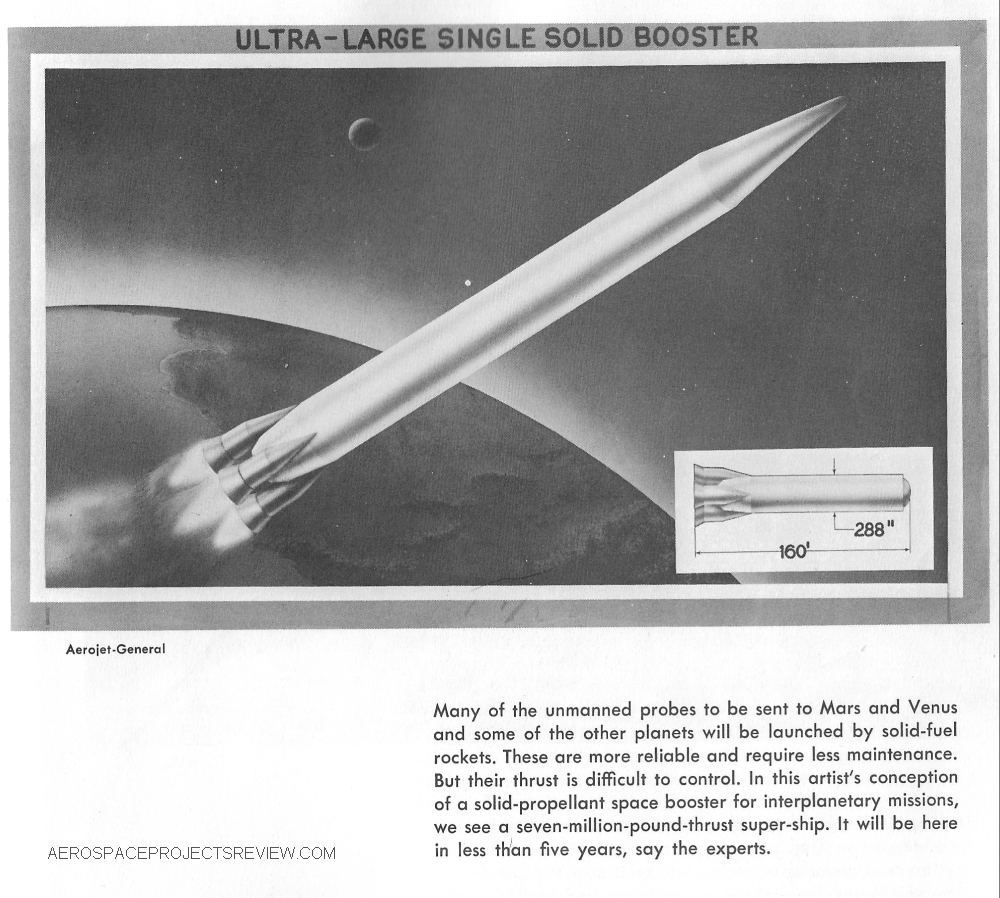Today, the notion of building a space launch system that uses solid rocket boosters is kinda… silly. Liquids have much higher performance and, as SpaceX has conclusively demonstrated, liquids are quite recoverable and reusable, far easier than solids. But fifty, sixty years ago, solids made a *lot* of sense. They worked, they were reliable, they did not require a whole lot of delicate , constant babying. And for military purposes, they were (and remain) fantastically useful; load them up, stick them in a tube, forget about them for a few years, fire them at a moments notice.
This piece of Aerojet artwork dates from 1961 at the latest and depicts a large solid rocket booster, presumably for space launch. The diameter was 288 inches… larger than the largest actually-tested solid rocket motor at 260″, smaller than the 396″ diameter of the Saturn V (also the diameter of the largest solid rocket motor design I can recall seeing). Note that it uses four nozzles. This is not uncommon on military solids such as the first and second stages of the Minuteman and some sea launched ballistic missiles; it’s costlier and weighs more than a single nozzle, but it give you the same performance at a shorter length. And when your missile is stuffed into a silo or, worse, a submarine, compactness is important. but those missiles all also constrain the maximum dimensions of the nozzle assemblies to be no greater than the motors they are attached to… again, so the missile can fit in a tube. THIS design went another way, with nozzles well outboard. This precludes silo launch. The advantage for a non-silo launched space booster to split up the nozzles like this is unclear. Some small reduction in total length, and some roll control authority.
Vaguely related: US Bomber Projects #17 has an article and diagrams of a somewhat smaller 260″ diameter solid rocket boosted ICBM from Thiokol.
